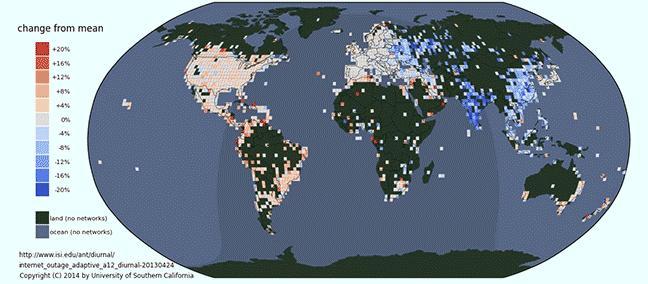"This work is one of the first to explore how networking policies affect how the network is used," Heidemann said.
There are 4 billion IPv4 internet addresses. Heidemann and his team pinged about 3.7 million address blocks (representing about 950 million addresses) every 11 minutes over the span of two months, looking for daily patterns.
"This data helps us establish a baseline for the Internet — to understand how it functions, so that we have a better idea of how resilient it is as a whole, and can spot problems quicker," Heidemann said.
The team's work is ongoing. "We have grown our coverage to 4 million blocks [more than 1 billion addresses] as Internet use grows," Heidemann said. He hopes that long-term observations will help guide Internet operation.

The Internet "sleeps" -- but not everywhere. Find out why.
(Photo Credit: Courtesy of USC Viterbi)

This GIF shows how the Internet "sleeps" in some places but not others.
(Photo Credit: Courtesy of John Heidemann / USC Viterbi ISI)